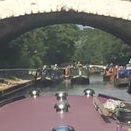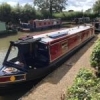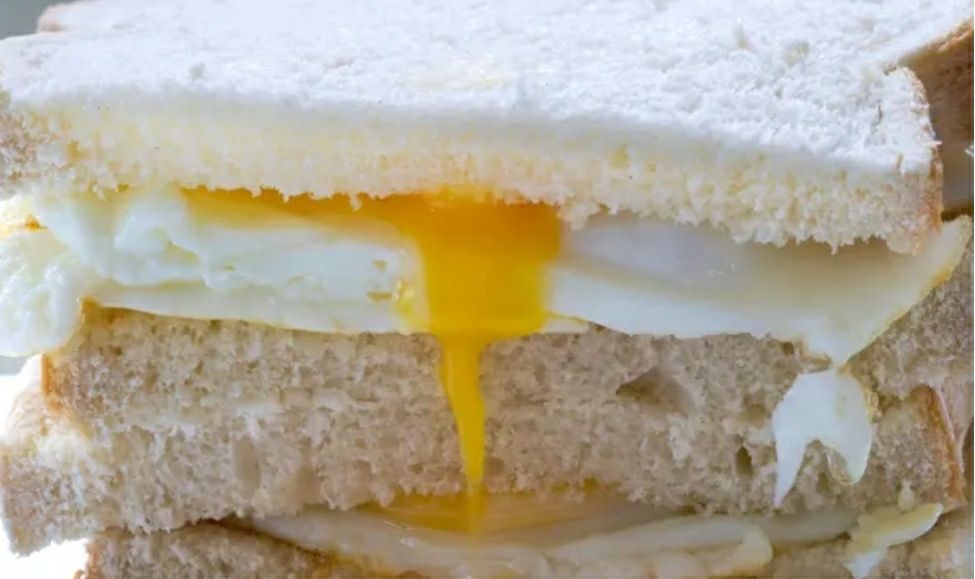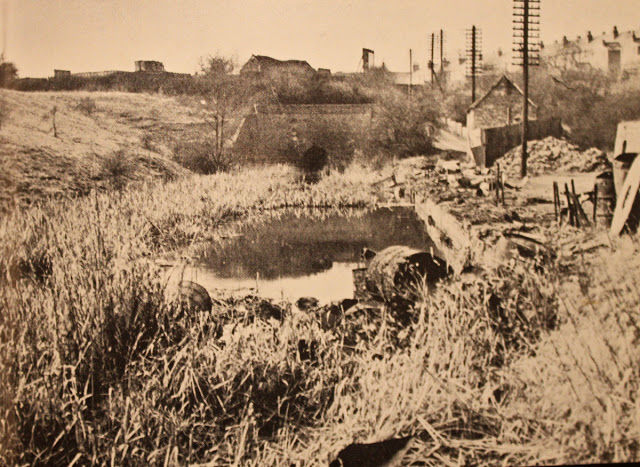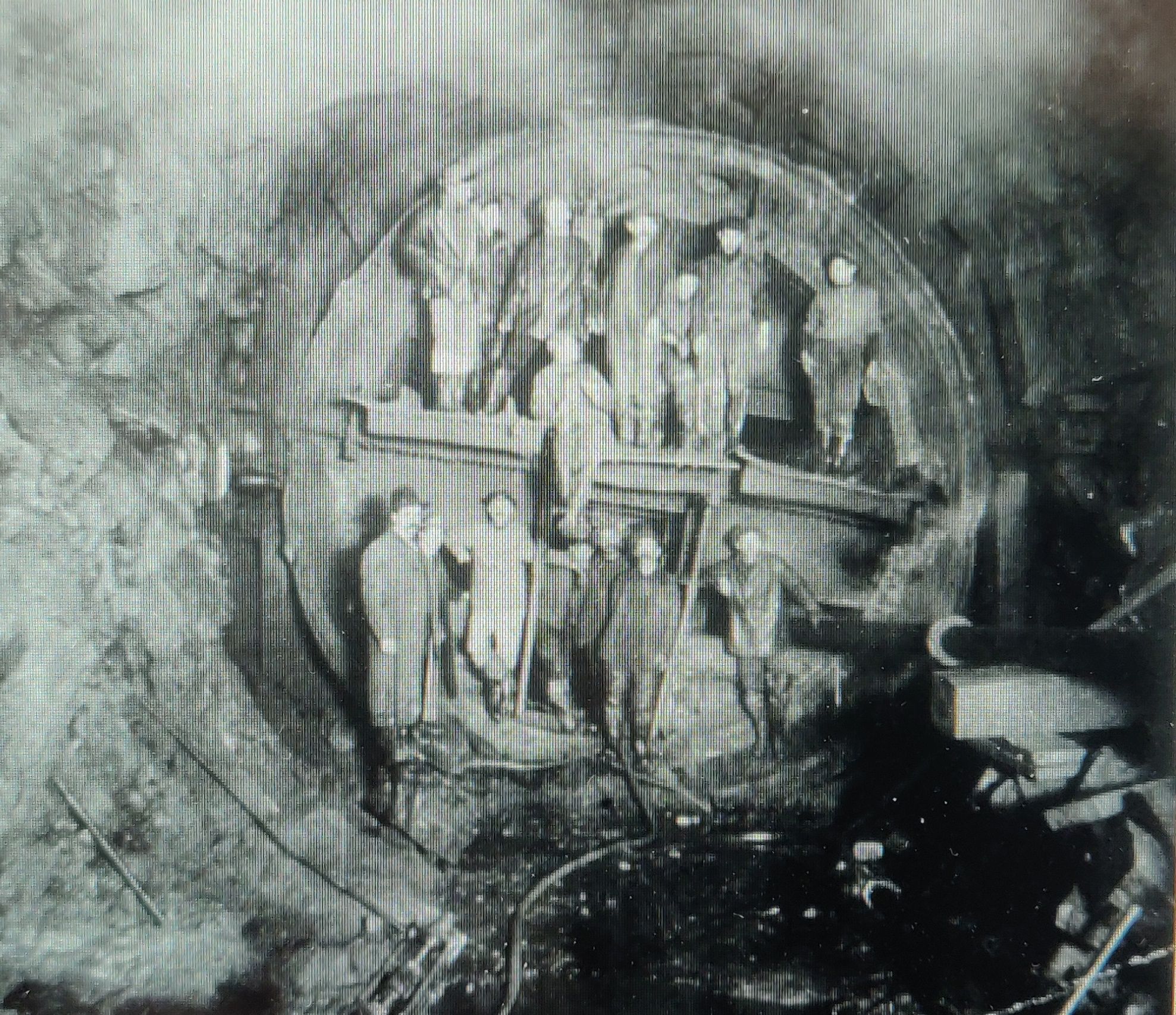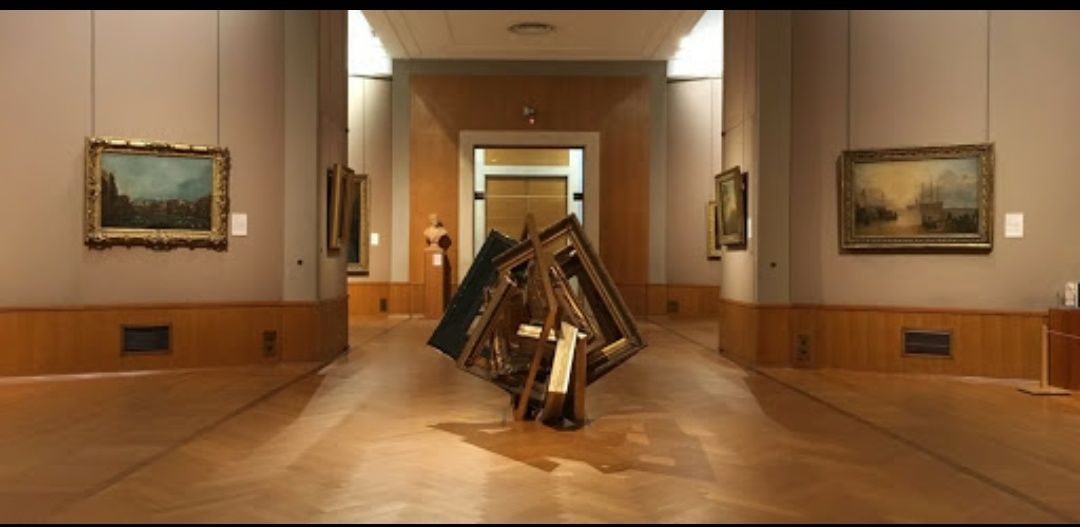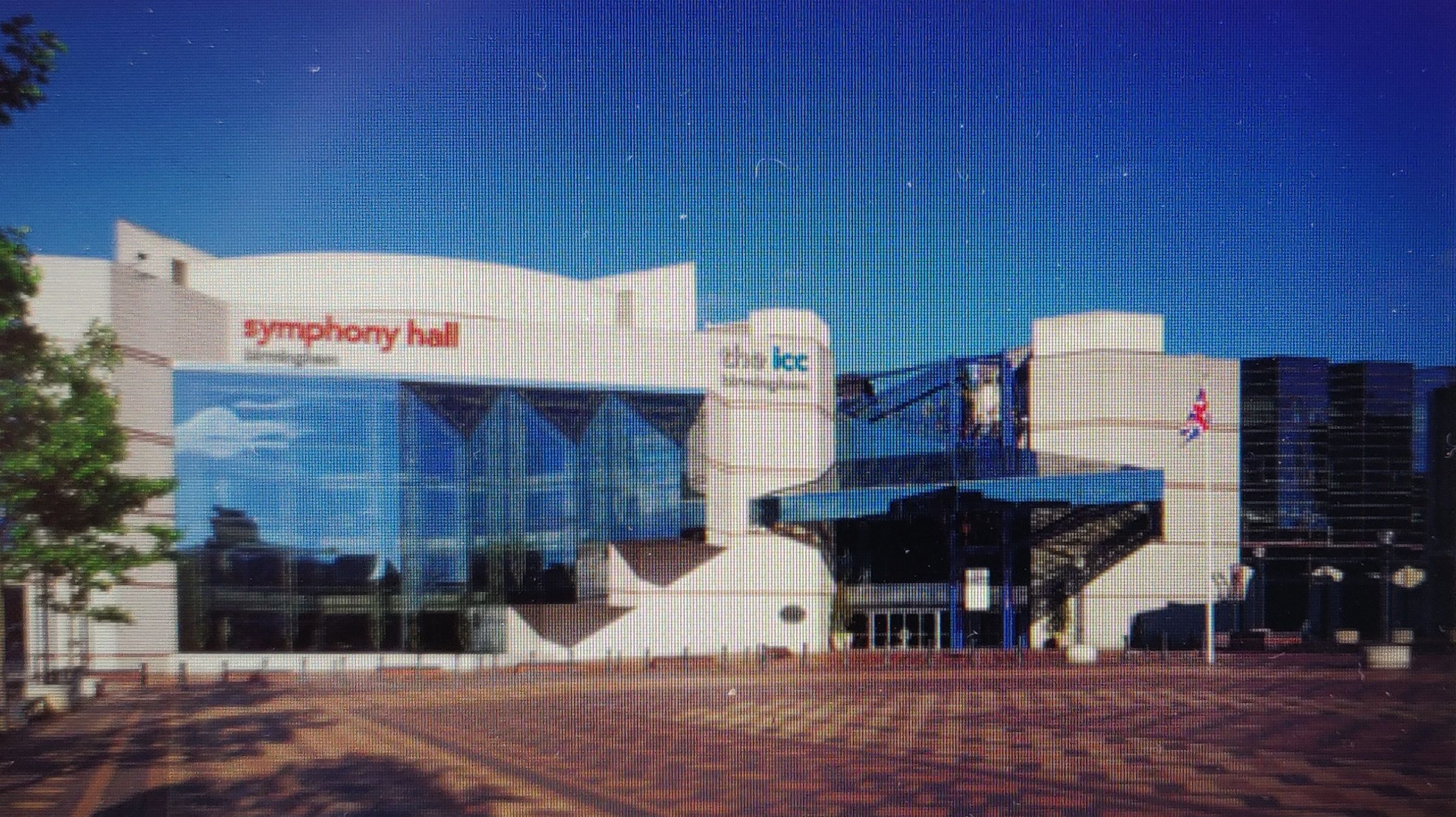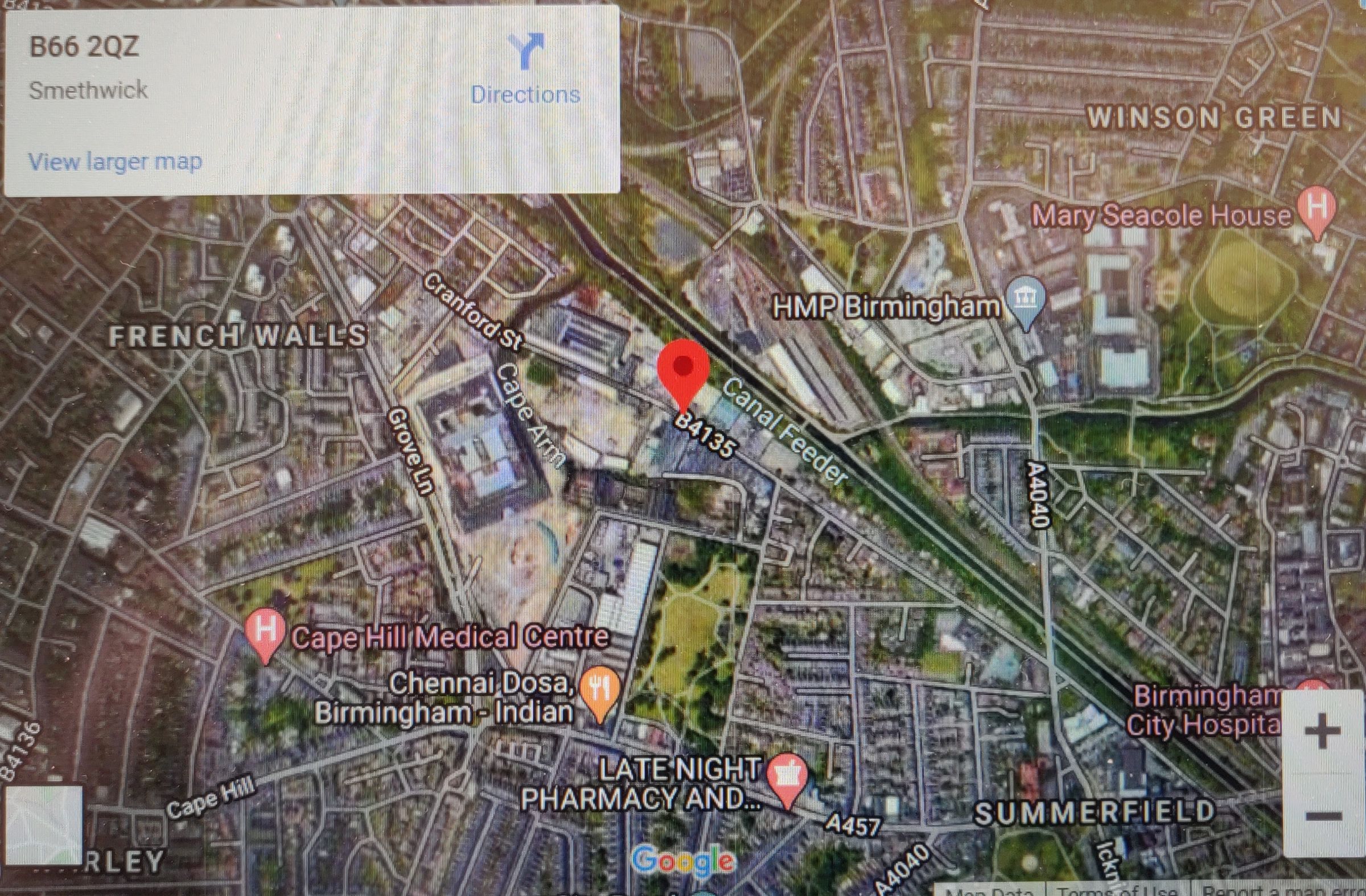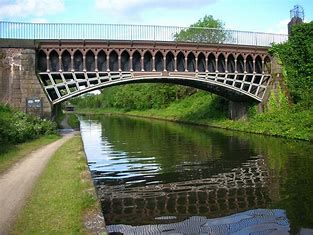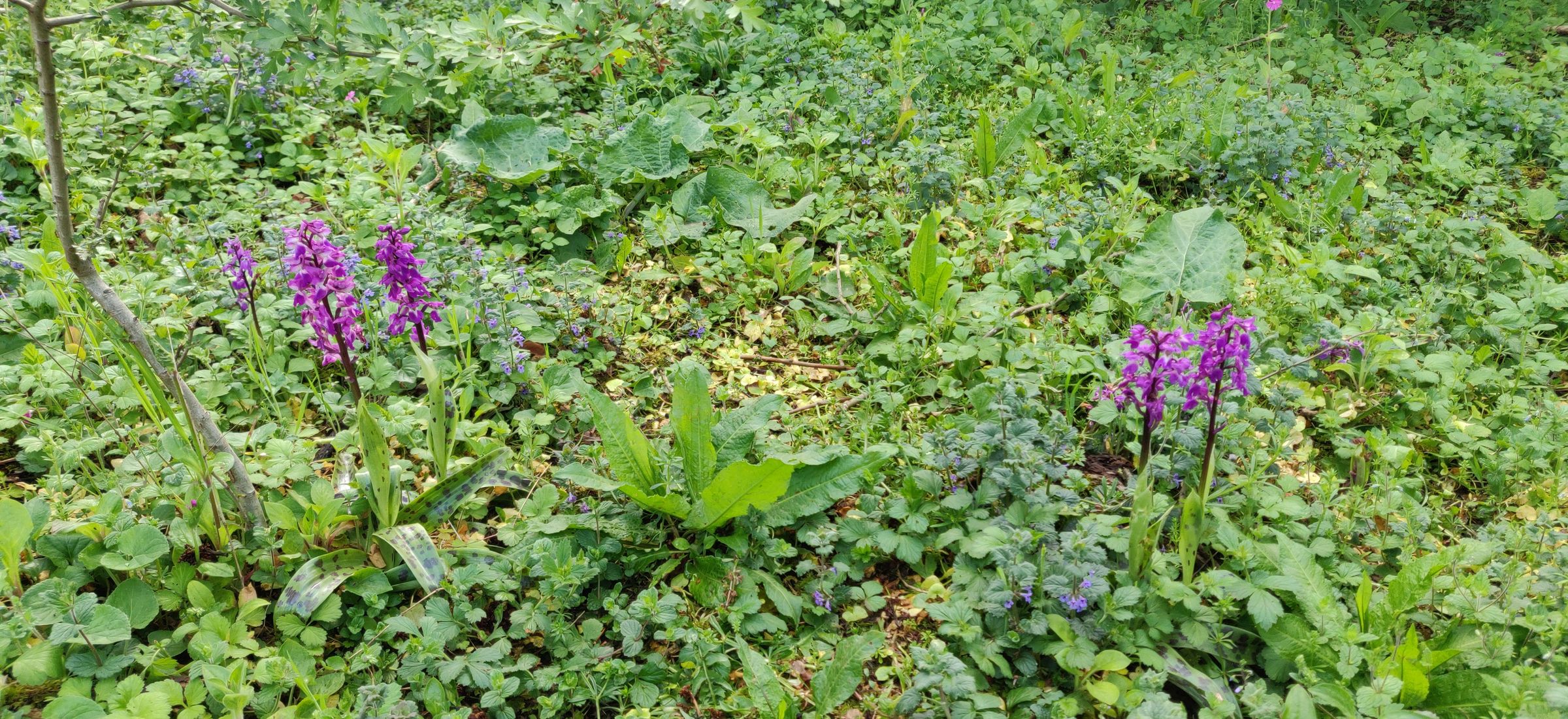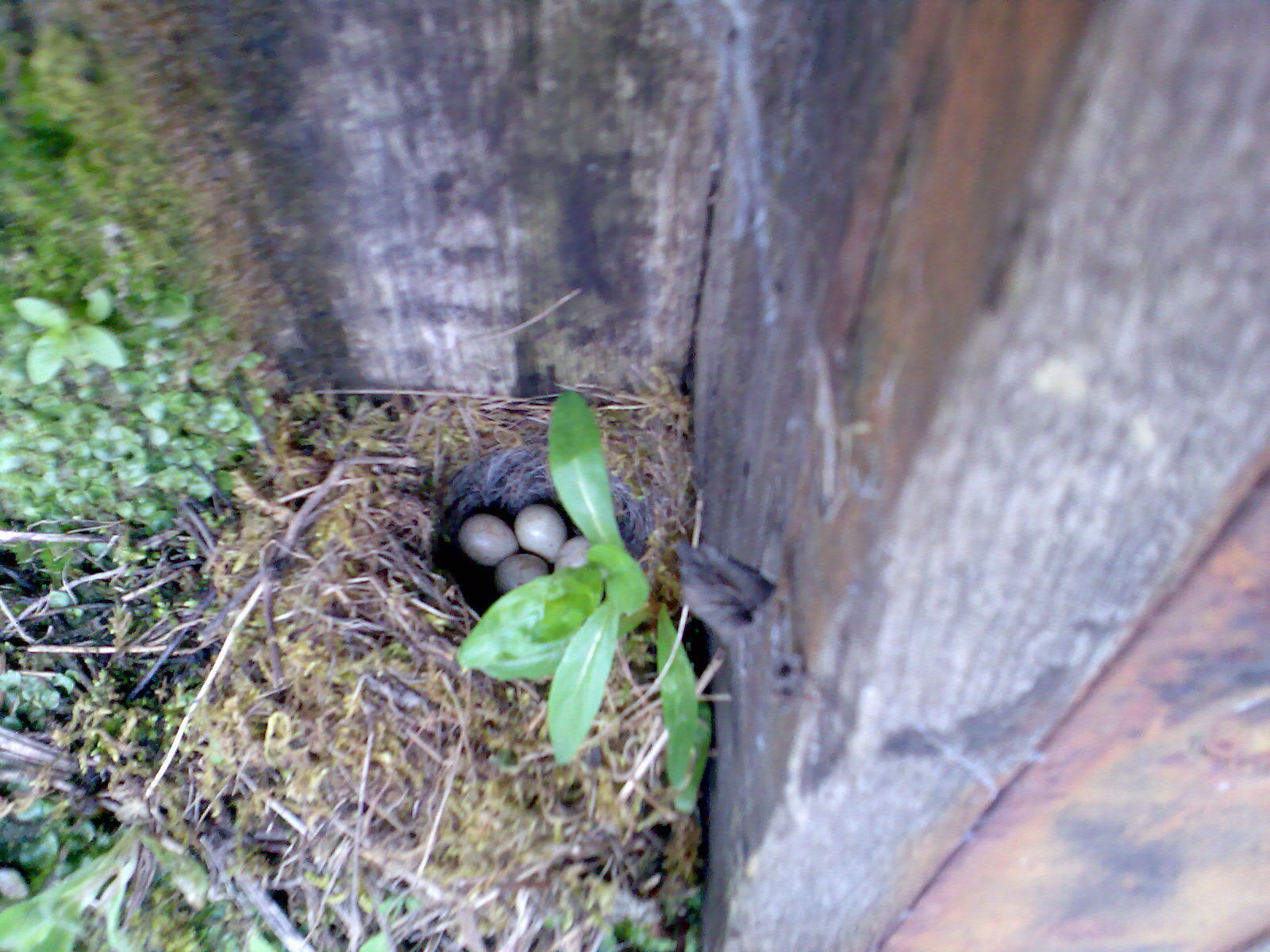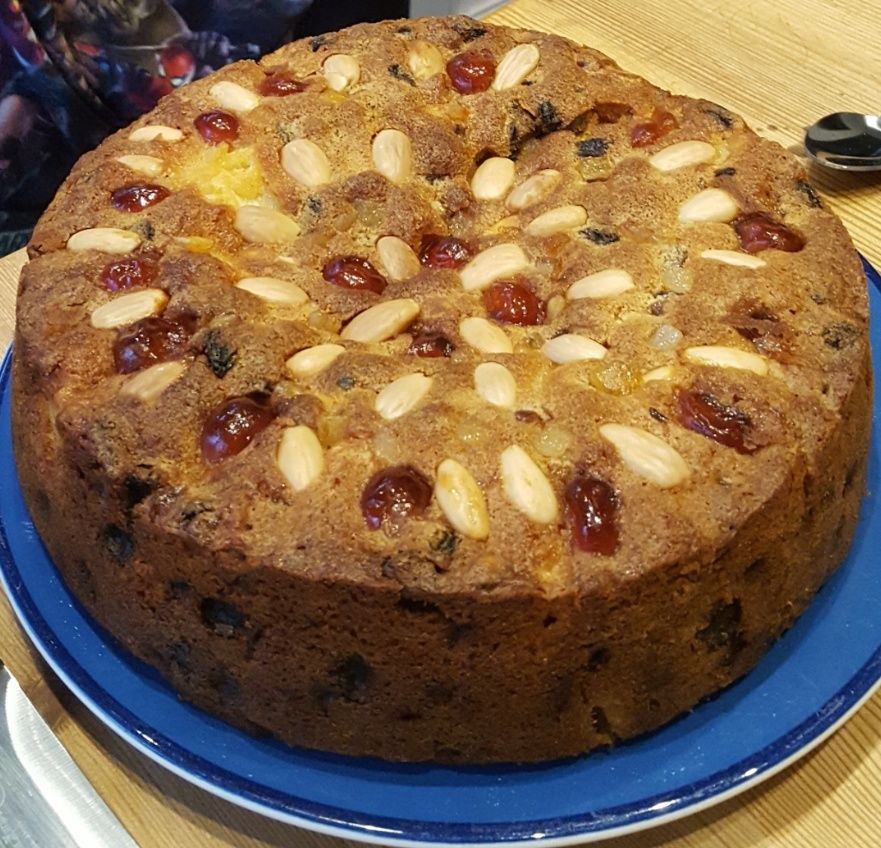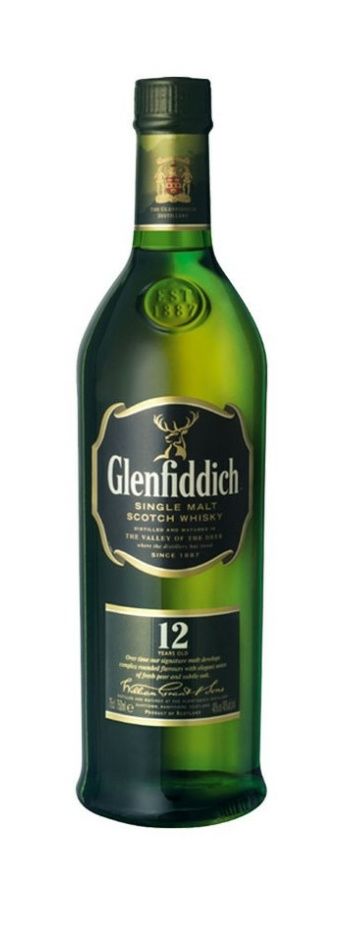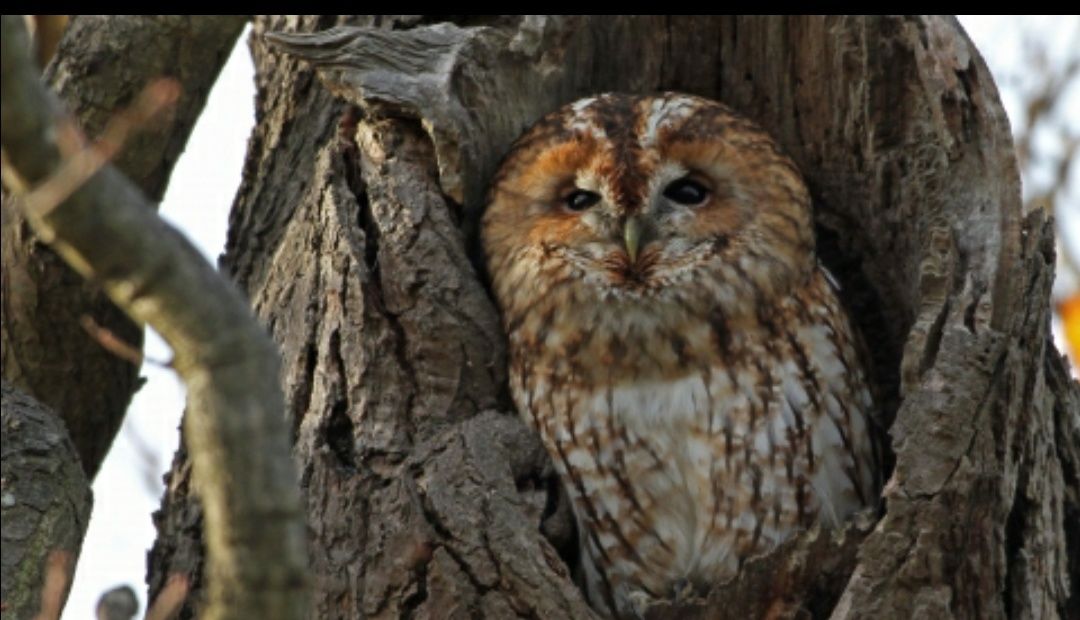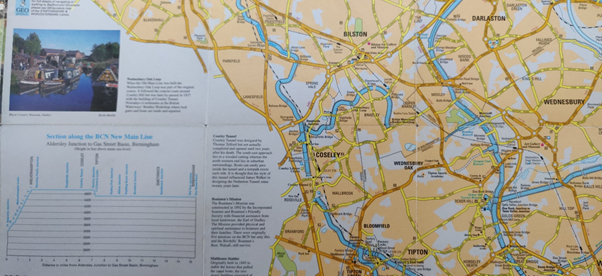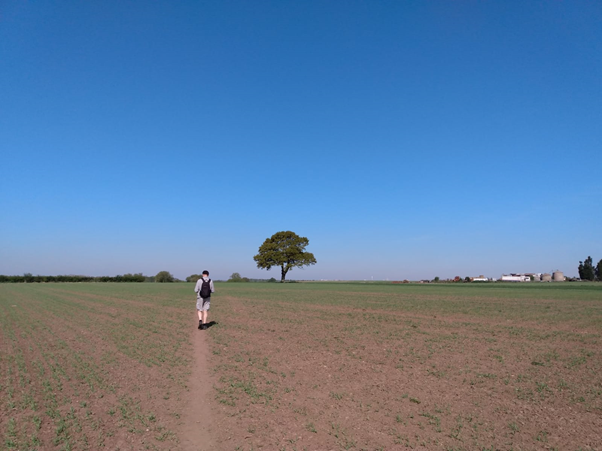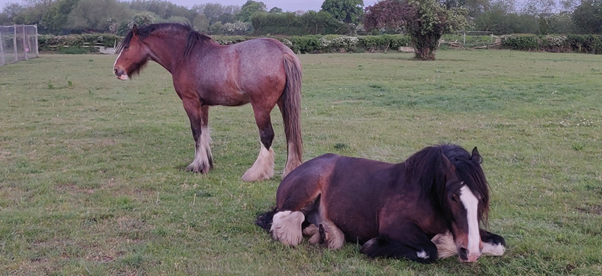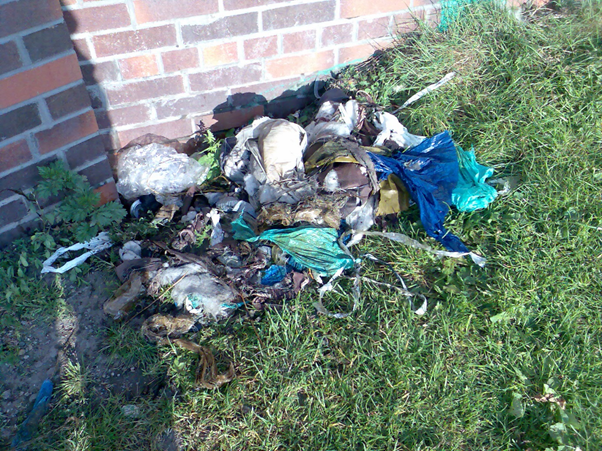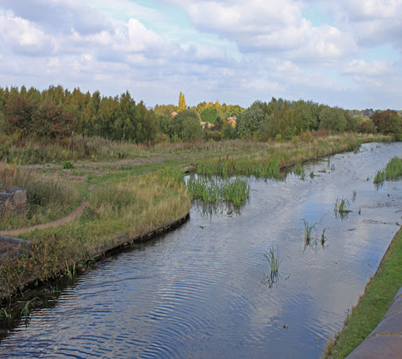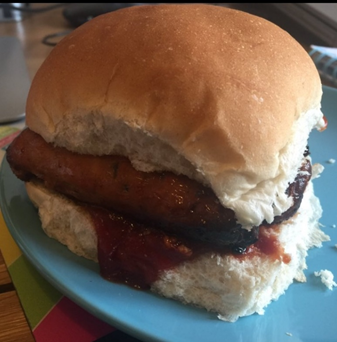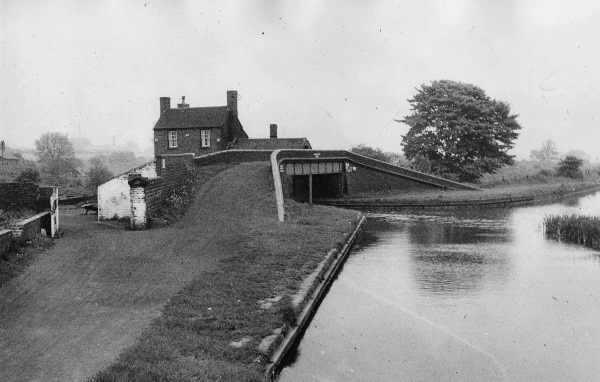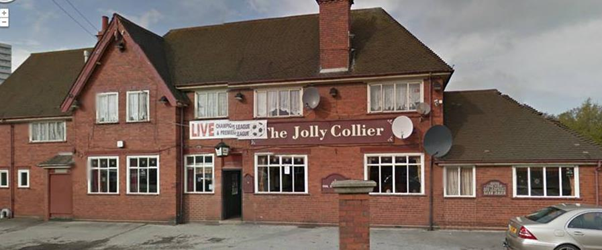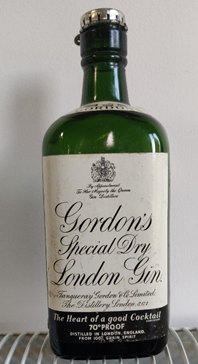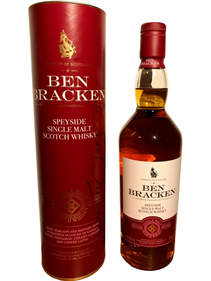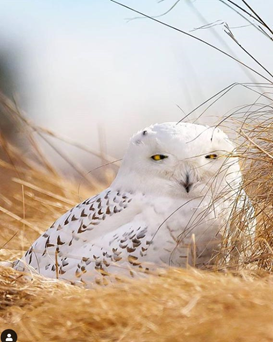

trackman
Member-
Posts
946 -
Joined
-
Last visited
Contact Methods
-
Skype
chrisjparker1766
Profile Information
-
Gender
Male
-
Location
Nottingham
-
Interests
Boating, reading, bird watching, cycling, music, travel.
-
Occupation
Civil Engineer, technical author
-
Boat Name
Chateau Neuf
-
Boat Location
Fazeley
trackman's Achievements
Proficient (7/12)
22
Reputation
-
I am now trying to guess who is judging this, who would know I was referring to Stan when I mentioned BH rails! To quote the very man, "but why?". I won't mention the gentleman's full name, but I think we both know who it was.
-

Team "Whisky Galore" Virtual BCN Challenge 2020 Cruise Log
trackman replied to Richard T's topic in Cruise Diaries & Reports
Team “Whisky Galore” Virtual BCN Challenge 2020 Cruise Log Day 4 It was an early start from Hawne Basin, a shame as we’d been made to feel very welcome by members of the Coombeswood Canal Trust (at appropriate safe distance, of course). The crew wished to take advantage of cultural opportunities available along our route, and even with the use of time travel we needed to get underway. We were exceedingly glad of breakfast as we travelled, egg butties this time. Mrs Trackman was pleased that we didn’t need to go back through the very tight Gosty Hill Tunnel, until she realised the much greater challenge of the alternative, Lapal (or in older spelling, Lappal) Tunnel. This is significantly longer at 3,795 yards than Gosty Hill’s mere 557. It was of similar tight bore, until subsidence closed it in 1917, and so presents a significantly greater challenge, even though we were able to nip back in time to a period when it was navigable. Fortunately, in 1841, 43 years after the tunnel was opened after construction by William Underhill, an unusual means of mechanical boat propulsion was installed. This obviated the effort of legging all that way. Judicious selection of our cruising date through the remainder of the Dudley No 2 Canal from Hawne Basin to Selly Oak ensured that not only was the whole canal navigable but also, we were propelled through the tunnel relatively effortlessly. The propulsion was thanks to a steam engine and the paddle wheel it drove. These surcharged the tunnel with water, stop gates at each end being closed to retain the extra liquid. When it was the turn of boats at the Halesowen end to go through, including “Whisky Galore”, the opening of gate paddles at the far end of the structure caused the water to flow in that direction. The boats had been manhandled into the tunnel one behind another, and were drawn through surprisingly effectively, to the far end. In the real world of 2020, the Lapal Canal Trust (www.lapalcanal.co.uk) is working to restore parts of the canal to water and maintain access for the public. Lapal Tunnel is unlikely to ever be reopened, but an outline scheme has been assembled for a canal over the top with lock flights at each end. One can only hope! Reunited with Shergar and Mrs Trackman, who had walked him over the tunnel top with other boat horses, we were soon underway once again under normal, equine, power. After the tunnel there is a section of the canal that remains in water today, in a public park & golf course. We saw this in its original state, running through “The Leasowes”, a private estate owned at one time by a poet called William Shenstone. Below is a picture of the Selly Oak end of the tunnel taken in the 1950s. Courtesy of Andy Tidy. The two photos above contrast the tunnelling machines of yesteryear and of today. The top one is of an ancient tunnelling shield, (courtesy of Tunnel Business Magazine) showing the lucky guys who, facing the soil behind them rather than the camera as depicted, would have hand dug the ground to clear the way for the apparatus to be pushed forward for them to dig again. All the while worrying that they might hit water or running sand, and disaster. This kind of thing is likely to be the best that might have been used to drive a tunnel like Lapal, and possibly far better. The lower shot is one taken by Trackman, showing what a modern equivalent looks like as it goes into the ground. This one was driving one of the Crossrail tunnels under the River Thames from Woolwich, with the other tunnel already complete alongside. These multi £million machines do everything mechanically, and are steered by an operator at a PC in an office, using a joystick like a games machine. They compete to see which driver can keep closest to the designed path over a shift. with a disc the size of a 50p piece being enough to encompass the error! Humans do ride in these machines to carry out certain tasks, but their safety is assured by all kinds of systems that can protect against almost anything. We soon emerged onto the Worcester & Birmingham Canal, at Selly Oak, turning left towards the big city. It was time to change our time travel settings in order to shift to the modern era, but prior to the lockdown for Cv-19. We wished to make our first cultural stop, and moored up in order to visit the Barber Institute of Fine Arts at the University of Birmingham. This is a free to visit gallery with works by world famous artists from Auerbach to Van Gogh, including Monet, Degas, Gainsborough, Gauguin, Rubens, Rodin and more. This is the building, seen from inside and out: After a most enjoyable time at the Barber, we returned to the boat and persuaded Shergar to be harnessed up once again. He towed us further, up to and around Refuse Turn and right into the city centre, where the Trackman duo had an appointment with the City of Birmingham Symphony Orchestra. This was for a matinee concert in Symphony Hall. They are great fans and patrons of the CBSO, and have been known to bring their own boat into the city in order to go to their concerts. This time they were to use the Automat Sehnsucht to go back to a favourite event, a concert featuring the Orchestra’s Osborne Music Director & Principal Conductor, Mirga Grazinitye-Tyla, conducting her “band” performing Mahler’s 8th Symphony in E flat major. This is an 85-minute symphony, completed by the composer in 1907, and known as “The Symphony of a Thousand” because of the large orchestra and massive number of choral singers and solo singers required. This performance involved the CBSO with 5 international choirs, so many that some of the public seating in the Hall’s galleries were required to accommodate singers. We moored in Cambrian Wharf opposite “The Slapper & Pumpkin” aka “The Flapper & Firkin”, but no Brummie would use its proper name, would they? They also refer to the James Brindley by a rhyming name, but I’ll not repeat that as some might find it offensive! The other members of our crew made Shergar comfortable & safe, then paid a visit to the Ikon Gallery and its café. The CBSO, conducted by Mirga Grazinitye-Tyla The Trackpeople had a great time at Symphony Hall, returning singing the music they’d heard, to find that the others were on board and raring to go. Winding “Whisky Galore” with a horse was an interesting experience in the confines of the Basin and with a crew more used to diesel power. We followed the Old Main Line route, including such twists and turns as what are now known as Oozells Street Loop, Icknield Port Loop, and Soho Loop, as far as Cape Arm Junction in Smethwick, former constituency of Enoch Powell MP. The map shows the arm's location. An excursion up the Cape Arm was the next challenge, and as often happens, we found the return easier than the trip up. Learning by experience, I think it’s called. The arm was originally a loop, and before that a part of the original Main Line, being severed like the other loops when Telford built the New Main Line in 1827. Part of it was later infilled, turning the loop into a dead end. On the Main Line once more, we went on to Smethwick Junction to bear right onto the Old Main Line, climbing up the 3 Smethwick locks, to take the sharp left turn above the top lock, into the Engine Arm. The arm was named after the Smethwick pumping engine, installed in 1779 to pump water back to the top level, from the bottom of the lock flight. Originally, the Old Line ran at a higher level, and the Smethwick flight and the flight at the other end of this section, Spon Lane Locks, both had 6 locks, but in the 1780s John Smeaton dug a cutting at lower level, and 3 locks of each flight were made redundant. Telford constructed the New Main Line in the 1820s, close to the original line, and the Engine Arm was built to feed water to the canal from Rotten Park Reservoir (now known as Edgbaston Reservoir) and to connect the Smethwick Engine. The feeder was enlarged in 1830, to make it navigable for boats to bring coal for the Engine. The return trip up the Arm, over Telford’s eponymous cast iron aqueduct to the basin and back was easy enough, with good winding at the end. We turned left at the junction with the Old Main Line and finished our day’s journey by carrying on to Spon Lane Junction, above the 3-lock flight of the same name. On the way to our mooring there, we passed the present-day Galton Valley Heritage Centre and transited the Summit Tunnel before passing under the gloom of the M5 motorway viaduct. Time for tea and whisky cake after we had seen to Shergar’s security, food and drink. Interesting natural history seen during the trip today included a Grey Wagtail nest in a lock gate, and some purple orchids growing canalside. Cake of the day was a home made whisky cake, appropriately enough The whisky of the day: and finally, of course, I must show the day's owl: -

Team "Whisky Galore" Virtual BCN Challenge 2020 Cruise Log
trackman replied to Richard T's topic in Cruise Diaries & Reports
A very Happy Birthday to Jan, with our best wishes for a special day. Mr & Mrs Trackman have been eagerly anticipating this section of our Challenge route, as it will take us past the very first house we ever owned, after we married in the early 1970s. We have “fond” memories of the sound of trucks crossing a Bailey bridge which crossed the Wyrley & Essington Canal about 100 yards from our front door. A “temporary” bridge that must have been in place for 30 years by then, and it showed. Mr T used to begin a morning commute to Birmingham by walking the towpath for some way en route to Walsall station. The canal then was not a pretty sight, and he recalls that one bridge he passed was a favourite spot for the local joyriders to dispose of the cars they were done with by dumping them into the cut. However, back to the future (isn’t there a film? That’s it, our musical theme for today is the film’s theme music). The Ts were so excited that they woke before dawn. Having heard that Barn Owls had been spotted nearby, they went for a brief walk, as the sun rose, but came back without any result except cold feet. The first of today’s jobs was to fetch the horse, but it wasn’t where we expected it to be! After some searching, Mr T found some ‘osses but not Shergar. Who knew horses snore? We didn’t, but these definitely were snoring! We have a video clip to prove it, but time & space are at a premium, so it’s not for here. Shergar was eventually found though, and while some of us hitched him up and prepared the boat to move on, others got hot mugs of tea ready and sausage baps. Very necessary, as though not icy like yesterday, the weather was distinctly chilly early on. Setting off, the going was good, but we were very glad to be horse drawn, avoiding the need for attention to the prop to remove rubbish. All our crew were well aware of the risk on this canal, having been along here in motored boats previously. Clearly things have improved little in more recent times, as it was obvious that others were discovering. Fishley Junction (Lord Hay's Branch) Photo courtesy of Andy Tidy Sausage cobs were a more welcome sight, though nobody spent too long looking at them! Shortly after leaving Pelsall Junction we passed under Pelsall Works Bridge north of Pelsall Wood, at the end of the common. Before the next bridge, we arrived at the junction with the Lord Heys Branch. This was a dead-end canal of 1.25 miles, opened in 1800, closed in 1954 like many of the former branches of the BCN. To travel up & back required some time travel, making use of our Automat Sehnsucht. The canal branch had 4 bridges over, and no locks, 3 bridges being named prosaically as Fishley Bridge No. 1, 2 & 3 respectively. The fourth, at the Newtown end just before the two colliery basins, carried the Stafford Road (A34). This road has been widened and the bridge obliterated, and little remains of the second & third Fishley bridges. The only one fully extant is No 1, which still carries Fishley Lane over the defunct canal near to the junction. The latter is still visible as shown in the photo, courtesy of Andy Tidy, aka Captain Ahab. The remains of the canal are apparently still visible as it skirts around the top of the Bloxwich Golf Club to the A34, and again beyond that road. The present-day debris and destruction did not inhibit our virtual return journey to its end and back, made well in the past at a time when the colliery was still active. Back on the main canal we came next to Little Bloxwich, passing under several road bridges, including that of the Lichfield Road. The canal course is twisty and between here and Bloxwich, it also goes through a complete “U” turn through Goscote, Hardern and Birchills Junction, before heading a little west of north through Leamore and Bloxwich to Sneyd Junction. Birchills Jn. Is where the canal and the Walsall Canal meet, above the top of the Walsall flight of 8 locks. Some years back, Mr & Mrs T were cruising on their then new boat with RichardT & Mrs RichardT, who were on their then boat. A small gearbox leak on the T’s boat needed attention under warranty & arrangements had been made to meet Sam Matts of Foxton, who was to do the repair. We moored both boats on the W&E near the junction and waited. We had some unexpected excitement as we did so, because some youths appeared on the offside of the cut west of the A34, and as we watched, set a number of grass fires in the undergrowth and ran off. It had been very hot and dry for some time, and the vegetation burned quite well, with a breeze spreading the fires towards properties nearby. A 999 call was appropriate, we thought, and call made, we were soon gratified to hear the sound of a fire engine approaching. MrsT & MrsRT were pleased to observe some fit young firemen rush from the appliance, and dash about with hoses, to extinguish the blaze. The arrival of Sam, to fix the gearbox, was a bit of an anti-climax after all this! S Sneyd Jn Is where the Wyrely Branch once joined the W&E. It was a northward line opened in 1785, and with the Wyrley Bank Branch, extended between 4 and 5 miles up the 5 Sneyd Locks to a long pound at a height of 503 feet. It closed in 1954. It used to be the main line of the “Curly Whirly” but was superceded as such when the canal was extended eastwards from Ogley to Huddlesford, relegating the original section to branch status, and it finally closed in 1954. The Essington Branch, opened in 1798, once went off this one above Sneyd Locks to reach a colliery at what was then the BCN’s highest point at 533 feet, but it was abandoned in 1830. Sneyd Junction (image courtesy of Andy Tidy). Not long after Sneyd, we passed under the M6, a modern nightmare which was overcrowded and unpleasant to drive even in the 1970s. Living up to its nickname the canal winds its way on, through Short Heath and Wednesfield, a former hive of heavy industry. We pass the end of the Bentley Canal at Wednesfield Junction, where boats used to come from or go to the Anson Branch of the Walsall Canal near Darlaston. Sadly this 3.5 mile canal, with 6 locks, was closed in 1960, having opened in 1843. The half mile long Neachells Branch used to extend south from its west end. Continuing we crossed the Grand Junction Railway by “The Jolly Collier” public house. This section of the railway, between Bescot and Wolverhampton, is still an important freight route with occasional passenger diversions, but regular passenger services from Birmingham turn north at Pleck Junction to our east, to go on to Walsall or even Rugeley. The pub is still there & was thriving at least until the lockdown. Go to @JollyCollierPub for more info. Time pressure, the lockdown and the quantity of Scotch etc we needed to get through, deterred us from stopping, and we reluctantly proceeded to Horseley Fields Junction to join the Birmingham Main Line, turning left and south towards Brum. We had originally planned to stop here for the night, but thanks to the vlockies great efforts yesterday we now had time to continue as far as Deepfields Junction instead. Who knows how important that extra distance may be later in the Challenge? As we moored up, Mr Trackman recalled another memory of the 70s. One of his bosses in his very early days with BR in Birmingham was a bridge engineer who had a reputation for penny pinching. Photo taken from Facebook. His favourite material for repairing or strengthening bridges was what is known as bullhead (BH) rail. This rail was originally symmetrical, with the intention that when the top, or head, got worn by rail traffic, the rail could be flipped over so that the bottom (foot) could be run on by the train wheels and the worn part would become the rail foot. This great theory never worked well in practice for several reasons. Later BH was rolled with a heavier head, allowing it to last longer without turning it over. The great advantage of BH for a bridge engineer was that it was not very stiff laterally & could be relatively easily bent sideways. This made it possible to fabricate quite complex shapes (not swans though, I imagine!!) or curved to fit under arches to strengthen them Enough reminiscences. We moored, untied the ‘oss and hobbled him nearby with a nosebag of feed and a bucket of water handy. Boat and ‘oss safely distanced from other boats of course. The team were by now quite keen to get more food & drink, despite having eaten snacks and drunk non-alcoholic beverages on the hoof. Whisky was available, of course, and Mr Trackman produced a fearsome alternative from the hoard of his late father. This was a half-bottle of real London Gin, actually distilled in London and 700 proof. Fortunately limes & tonic water were available for those who wished to have a G&T and dared to try the real stuff. Those not wishing to go for this, but preferring to stick to the Scotch (out of loyalty to our boat’s name perhaps) had a new whisky choice available tonight, Ben Bracken Speyside single malt. Of course, there may be some who will try out both alternatives during the course of the evening. Tomorrow may tell us who these were! Snacks on the hoof, naturally included a cake, this one a fantastic creation in chocolate, from Mrs Trackman. My apologies that the formatting is rubbish, but I'm struggling with my limited comprehension of the forum software, not normally posting anything as complex as this! Trackman -
MtB has a dim view of shares, but we found it brilliant for us when I was working full time. The cost was probably not much more than that of a quarter of the boating time we got each year. In addition, as I said before, we didn't have to start from & return to the same mooring every trip. We'd hand the boat over to another member of the group at the end of each trip, at some convenient mooring wherever we happened to get to. At the start of our next turn we'd meet the boat at a new place, wherever it had reached. That way we saw far more of the system than if we'd had our own boat at a fixed mooring, & weren't restricted to starting/finishing at a hire base. Finally, we made some new friends through the share.
-
All permeable insulation needs a vapour barrier on the warm side. This is to stop warm moist air reaching the cold side of the insulation, where the moisture from the air will condense and cause dampness. This applies to rockwool/glass fibre wool, & also to the joints in foam boards like Celotex & Kingspan. The advantage of the boards is that the air can only get through at joints, so sealing those is sufficient. Fibre based insulation needs a vapour barrier on the inside over it's whole surface, and again the joints in that must be sealed totally. This is because Rockwool etc are not airtight, so the warm damp air from the boat interior gets inside the fibres and condensation forms in there. Joints in insulation board can be sealed with waterproof tape or by spraying builder's foam into the gaps.
-
We were founder members of a private boat share that's still going strong some 17 years later. We left to buy our own boat when I retired & had the time to justify that, but would happily have remained otherwise. A couple of friends who founded the scheme with us are still members, and another couple, who had their own boat at one time, have sold that & joined the share. A good share scheme is a great way to own a boat if you don't want to own one by yourself. As well as keeping costs down & sharing the hassle when things go wrong, it has another big benefit. When you are not on the boat, it doesn't have to get left in the same place, someone else in the share can be on their turn, moving it to somewhere new. When your next turn comes around, you can start in a fresh place & cruise a new part of the system.
-
Who knows, the story may be just that, though iirc it featured in a local rag. The weed does look very convincing at times, I've seen it.
-
Yes, a few years ago now, BMW I heard. Don't laugh.
-
What you propose in having a different heating system to give diversity is very sensible. For that reason we have a solid fuel stove & a diesel one on our NB. We use the first for long term heat, the diesel as back-up & for a quick burst of warmth when that's all we need. Do you not have your calorifier heated by your engine cooling system? This is a great source of free hot water when you run the engine, but probably not important if you don't do that a lot. We also use it to heat the radiator system sometimes as when the engine is going the calorifier acts as a heat exchanger, warming the heating circuit quite effectively. Good when boating when it's not worth lighting a stove.
-
Just have to recommend Cox Automotive of Atherstone to anyone needing an Electrolux/Dometic Travelpower servicing or repair job. Ours failed after 13 years, but they mended & serviced it so it looks & runs like new. Wasn't cheap, but I should have got it serviced years ago! Brian Cox recommends services every 3 - 5 years, dependent upon the intensity of use. They are within walking distance of canal & rail station at Atherstone, behind the big parcel depot.
- 1 reply
-
- cox automotive
- dometic
-
(and 2 more)
Tagged with:
-
I have a set of half inch sockets with hexagon (Allen) keys. They are invaluable for stuff like this. I have a Beta engine, & both the alternators (12V & Travelpower) have the arrangement described, and they are easily managed with this set of tools. I fear I don't remember where I got the Allen key sockets, it was donkeys years ago, but a quick search on line should find a source.
-
Sorry for the slow response! Hydro is excellent, that's not the issue. Because it lowers the water level above the weir, it renders the CRT stream strength gauge next to useless. The gauge relies on water level to give an indication of how hard the river is flowing, but the hydro system lowers the level whilst still causing a strong flow. My experience is that the gauge can be in the green but the flow is what would have accorded with it being in the yellow, or even red, before the hydro was there.
-
Mine's an auto Rule & works fine if cleaned when it gets very mucky. However it's also wired to a manual switch that bypasses the auto switch. It came with 3 wires to permit this to be done easily, & means that in emergency the pump can be started manually. The usual problem when it gets dirty is the auto switch sticking on, I've found. This is very infrequent, & need never happen if an eye is kept on the state of the bilge.
-

Potential cooling solutions in hot weather .
trackman replied to CompairHolman's topic in Boat Building & Maintenance
Let me know if you find one! My Bolin heating circulation pump failed a few years ago, & they are no longer available. I've not yet found an adequate & quiet replacement & the one I'm using is really annoying -
Yes, physically the same, but needing a different pressure, as others have already said here.

